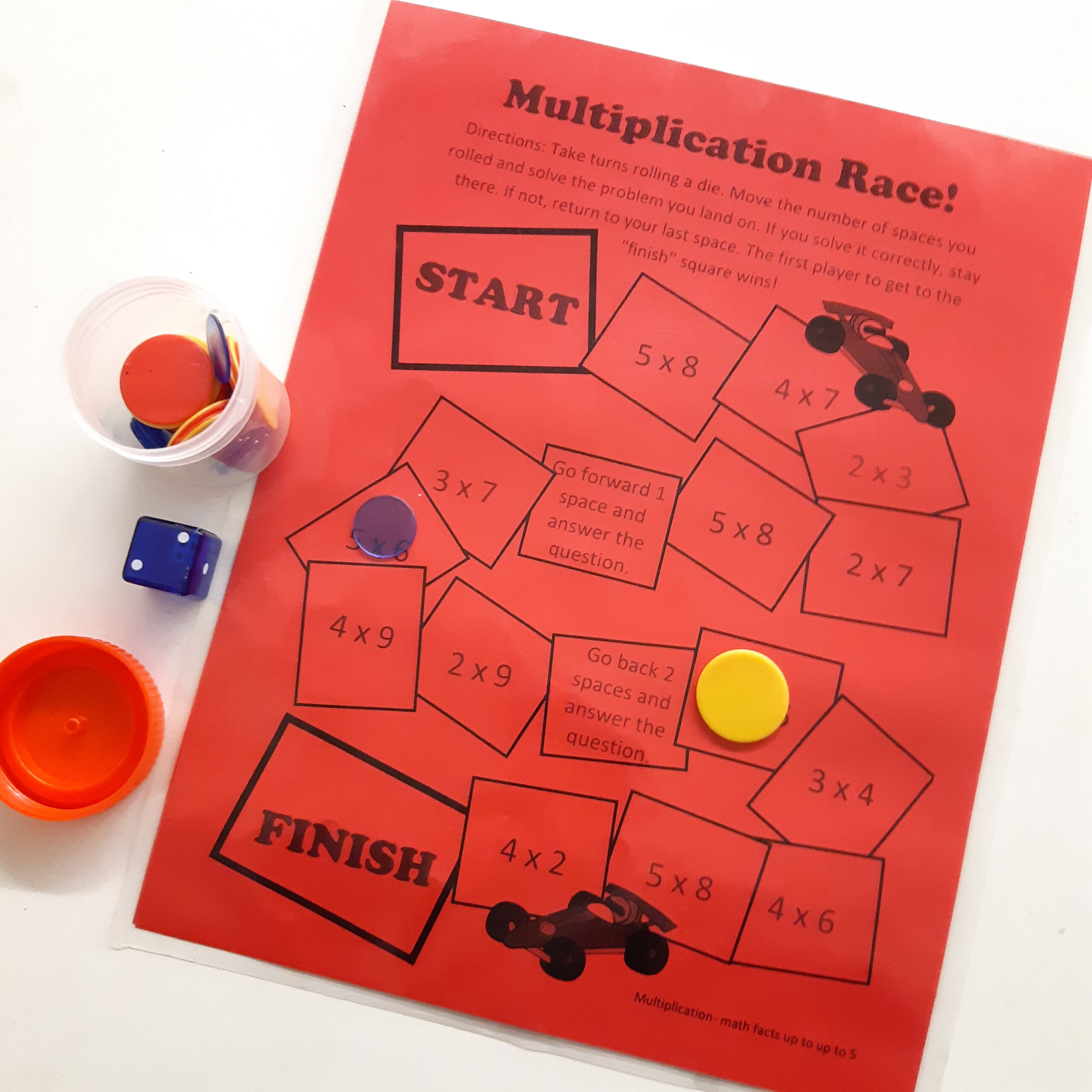There are so many things you could spend your money on when setting up your first classroom. I know that I bought things when I first started teaching that I never ended up using… and there were things I wish I’d bought earlier to save myself so much time! Here are eleven things I feel were actually worth my money.
Disclaimers: Teachers should not have to spend their money on their classrooms. Please do not feel guilty if you are not in a place to get all these things right now. Some of these things can easily be found second-hand, so don’t be afraid to put out an appeal for donations on social media or to hunt through thrift stores and garage sales.
1) Drawers for your copies
I love that these little drawers keep my copies for the week safely stashed away. I can also tuck lots of my read alouds in there (the big ones just hang out on top until it’s their turn).
2) & 3) Dice-in-dice & Counters
My math games supplies are one of the only things I bought in my first year of teaching that I still use regularly. I keep my dice and counters in these tiny plastic jars that are actually made for urine samples. Each jar has forty counters (20 each of two kinds) and one of these dice-in-dice. Before Winter Break, Spring Break, and Summer Break, students count up the counters and replenish them during our big classroom clean-out.
4) Math game storage (and math games)
These plastic drawers work perfectly for storing math games. When I printed them, I colour-coded them so addition, subtraction, multiplication, and division games were all different colours. Addition and subtraction games share a drawer and multiplication and division get one each. The dice and counters go in the bottom along with a box of paper clips to be used as spinners. I love that we can take the drawers out, spread them out, and limit the crowding when kids come up to get games.
As for the math games, tons of fantastic free and paid printables can be found on TPT. I have a few here, if you’re interested! You can also print instructions for card games and keep them with your printable games.
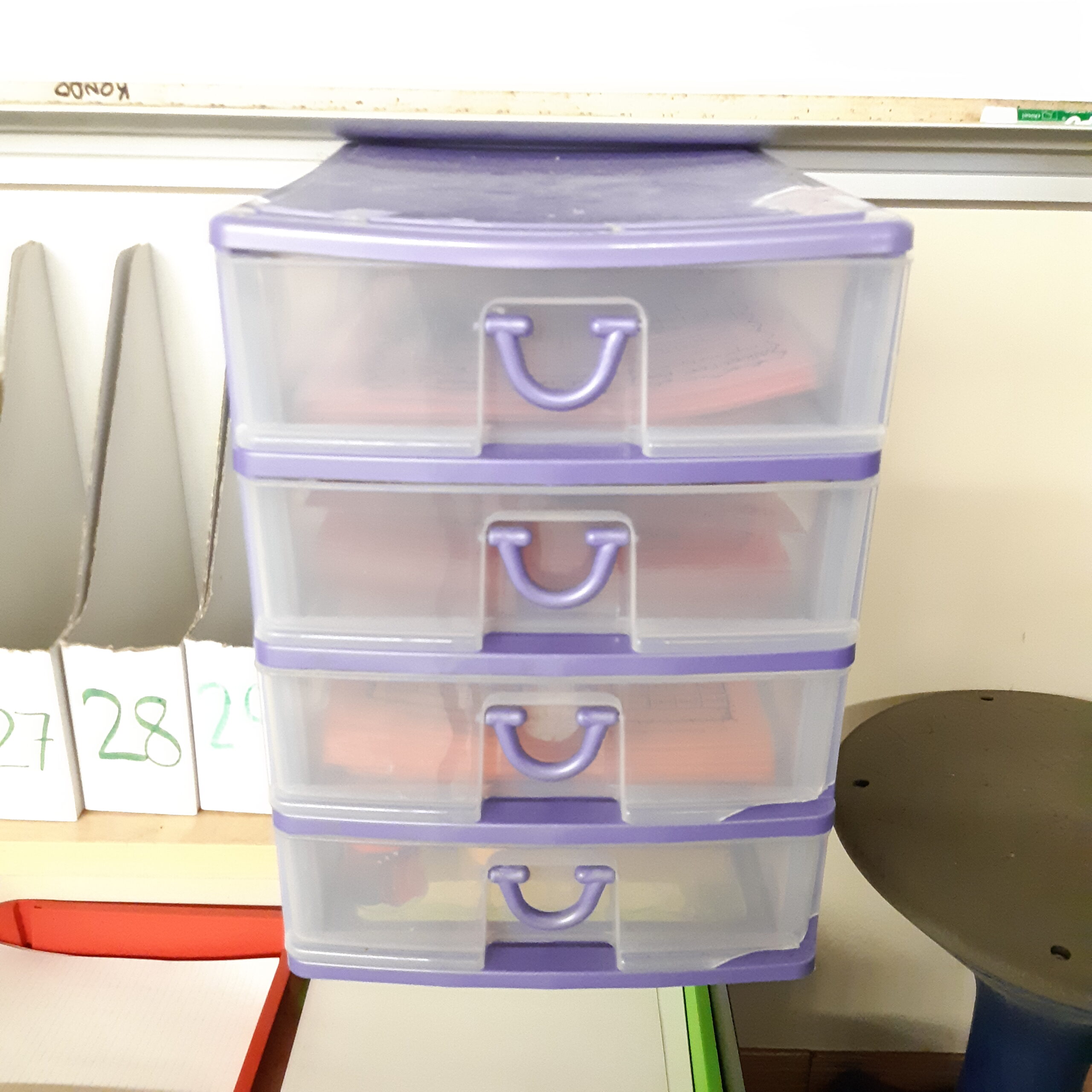
5) Whiteboard pockets
I survived without these for a few years, but I’ve used them so many times now that I feel they deserve a spot on the list! I mainly use these for things I would have laminated in the past, like station cards or templates that students fill in over and over again. I also use them for quick assessments with students, mainly in math. They love using the whiteboards and tend to get them less anxious than if I gave them the same math question on a piece of paper.
6) Clipboards
Clipboards open up so many opportunities to take learning outside! It took me awhile to get a class set, so for awhile they were basically a super-cheap flexible seating solution. Kids often used them while sitting on the ground up against a wall or sprawled out on the carpet. Additionally, if you keep assessment notes on paper, a clipboard or some sort of easy-to-carry file portfolio is a must!
7) Popsicle sticks… and a desk organizer to keep them in
I’m going to be honest… I kept my popsicle sticks in a plastic cup on my desk for four years. This year, I found this little desk organizer at the Dollar Store, and I’m so glad I picked it up. Now I can put the sticks I have already pulled in the other side of the organizer instead of just putting them on the desk and invariably knocking them off.
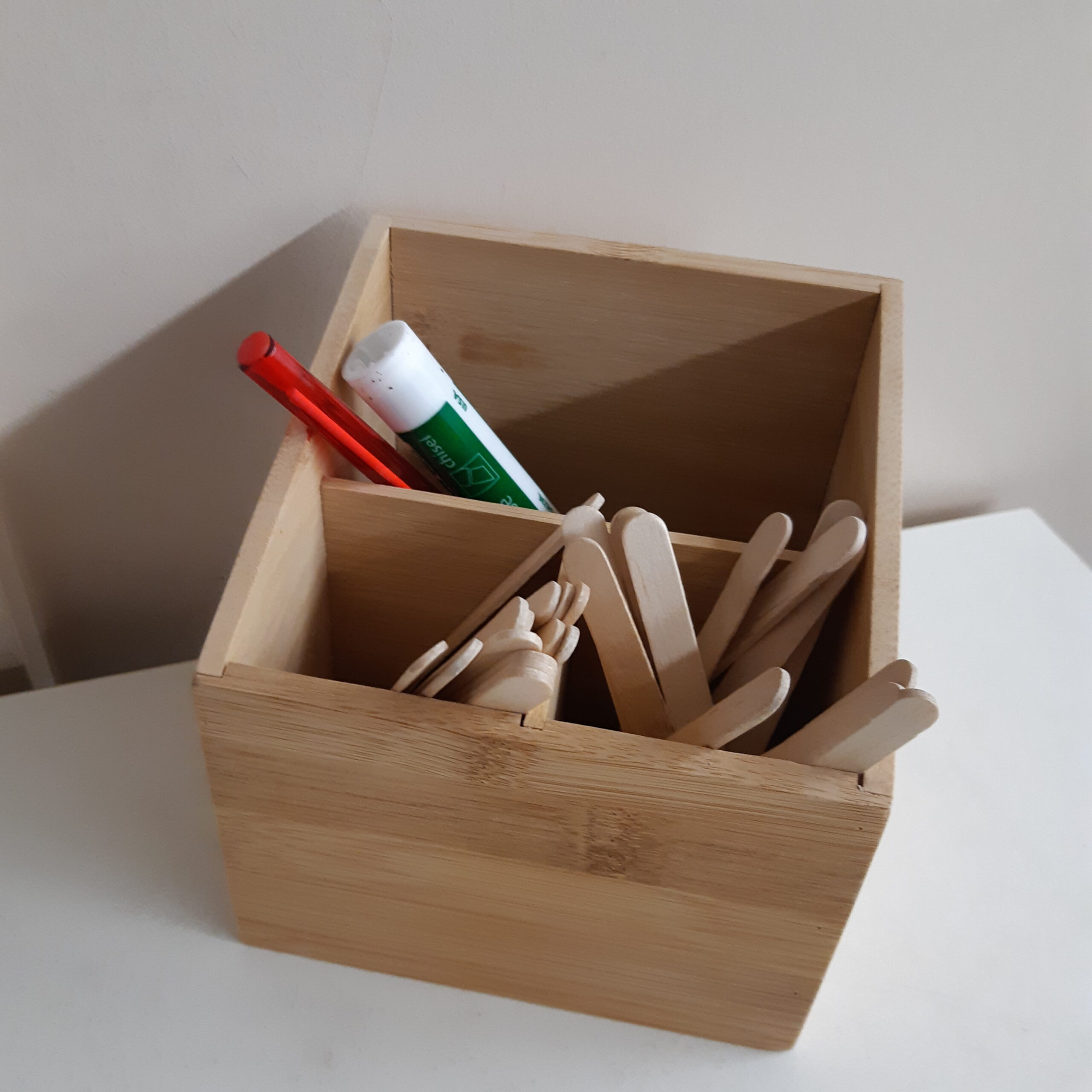
8) Magazine bins for students’ books
I LOVE my books and always tell the kids that my books are my babies! I find that they often get squished and wrecked in desks, so I encourage kids to store them safely in book bins. I picked up these ones from IKEA and purposefully chose cardboard ones to avoid using plastic. After five years, a few are on their last legs. Thankfully, they’re inexpensive to replace and I keep spares in my cabinet.
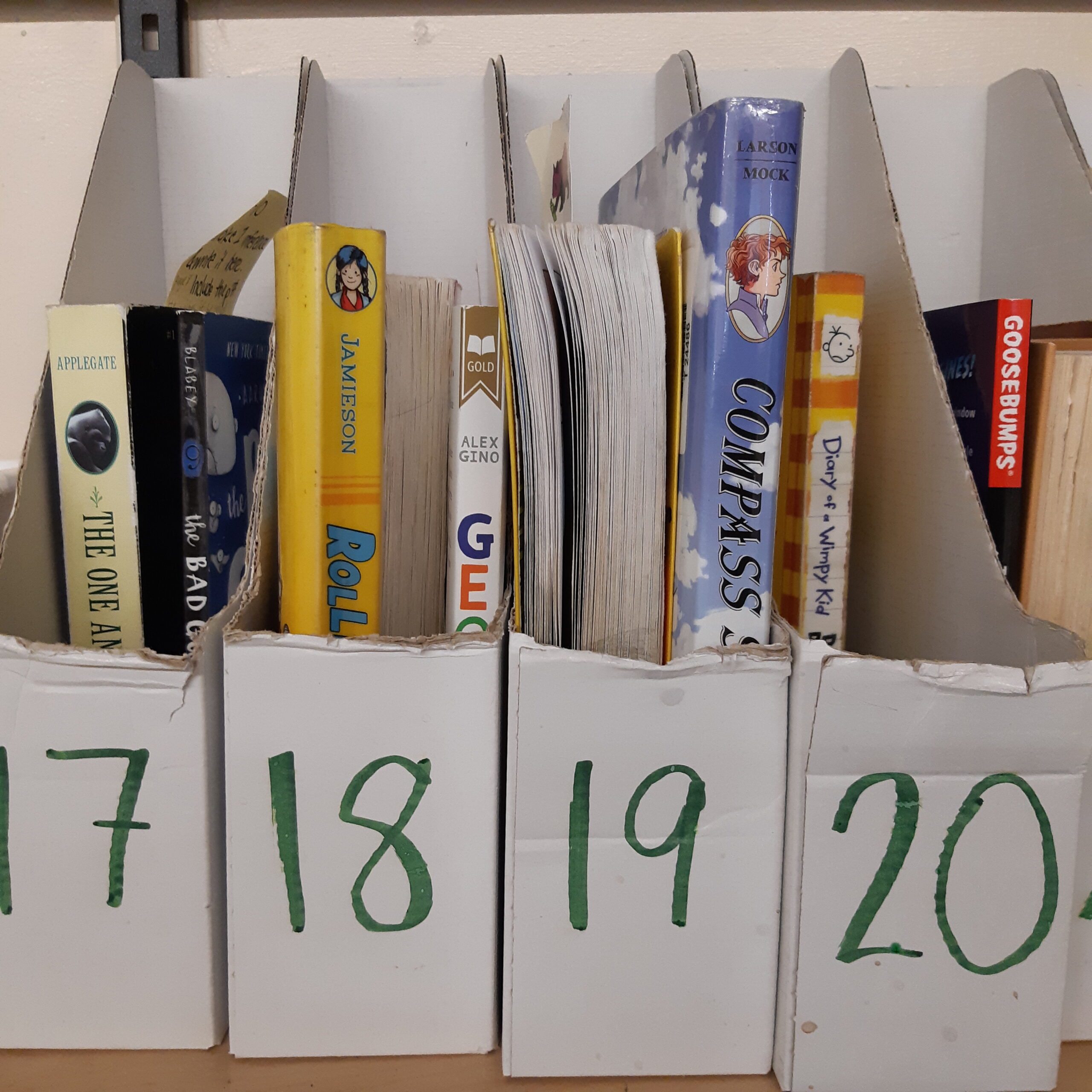
9) A whiteboard map
A few years ago, a friend got this map at a white elephant gift exchange and passed it on to me. I didn’t think I’d use it because I already had a map and a globe… but boy, was I wrong! I use this map to circle countries, show migration patterns, and talk about geographic features. Technically, it lives on the side of my desk when it’s not in use. But it’s in use so often that it regularly hangs on the board for weeks at a time.
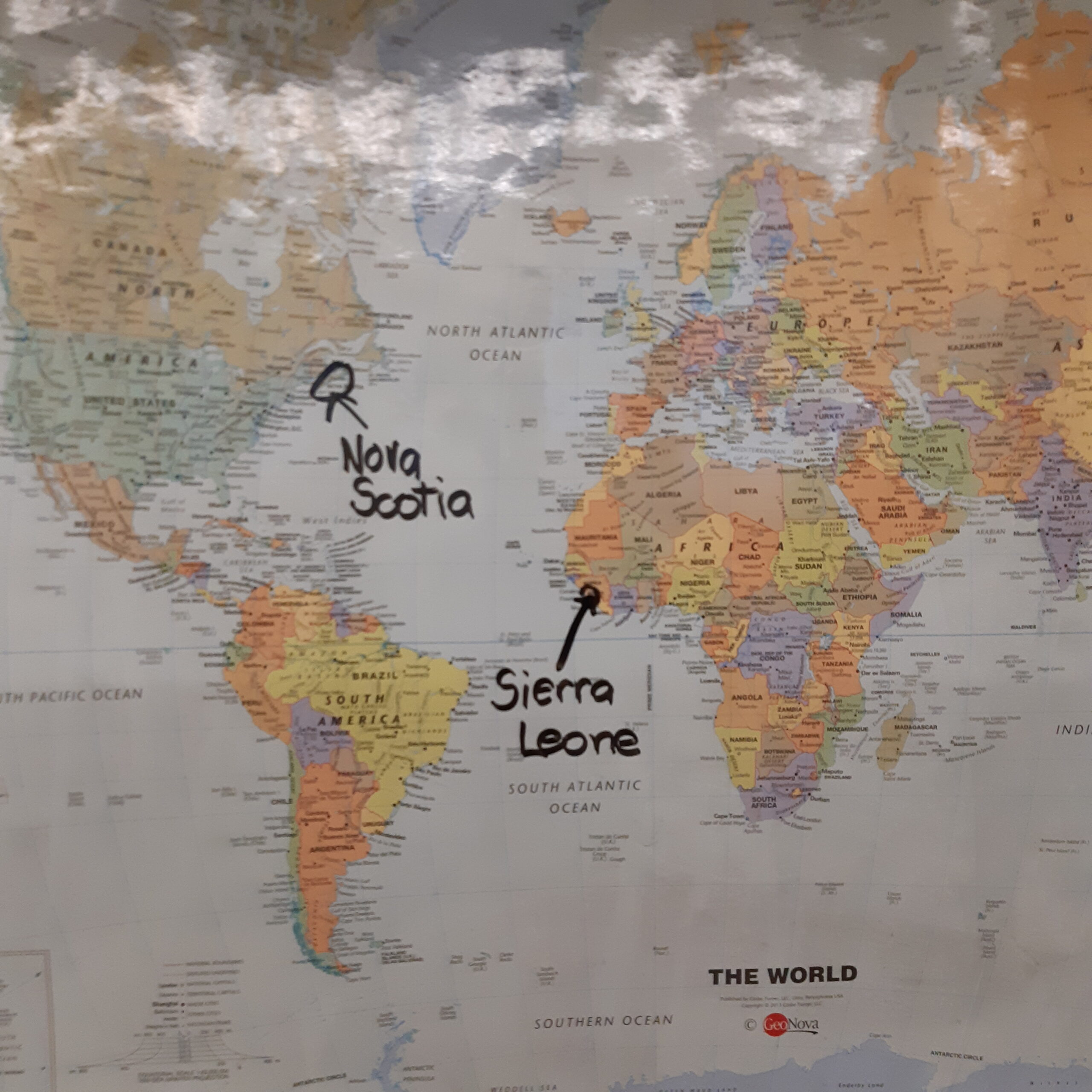
10) Magnetic Clips
Magnetic clips are perfect for displaying anchor charts, clipping notes to doors or windowsills, and hanging up materials for stations (not just on the whiteboard… use that filing cabinet and any other magnetic surfaces you have to really spread things out!). I’ve even seen a teacher give each student a clip that held their photograph and use them for graphing exercises.
11) Containers!
These stackable containers are great for storing those things that just don’t go in a filing cabinet. You may not need them at first, but as you start collecting and creating more materials, having a system to organize everything will be a major time-saver. Here’s a quick run-down of some of the things in my bins.
- Blue: Math and Science – rulers, sewing measuring tapes, paper clocks, pH strips.
- Orange: Posters (mostly small ones, but I did fold a few)
- Pink: Social Studies – My beaded timeline (click the link for the free template), Student Vote materials, postcards, photographs, various commemorative stamps and objects for history lessons.
- Purple: Art Samples- Paper projects are all in their own files labelled with the name of the project and supplies they requires. Other kinds of projects are stashed in a plastic zip-file at the top of the container. Every time I do a project with my students, I move that file down to the bottom of the bin so that the ‘new’ ones are up top.
- Clear: Task cards – Poetry sample cards, cards for a Social Studies trading activity, and a bunch of math station cards.
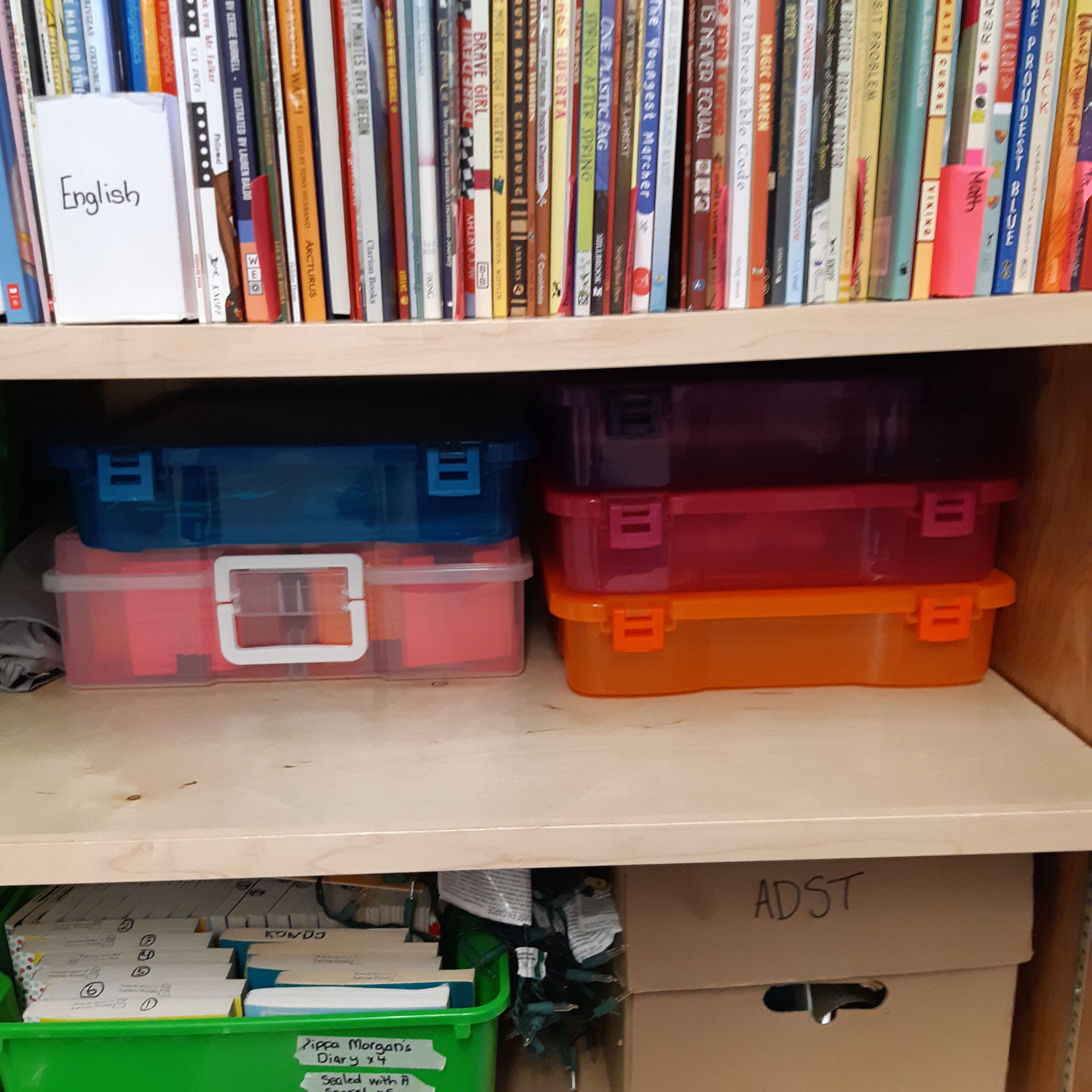
And, as a bonus…
START COLLECTING
- Start collecting tofu containers for paint water and yogurt lids to use as paint pallets. Tofu containers are less tipsy than cups and they stack beautifully. Everyone always gives me weird looks when I pull them out for the first time, but I’ve never had one spill. Yogurt lids wipe and wash off super-easily, so they can be used over and over again.
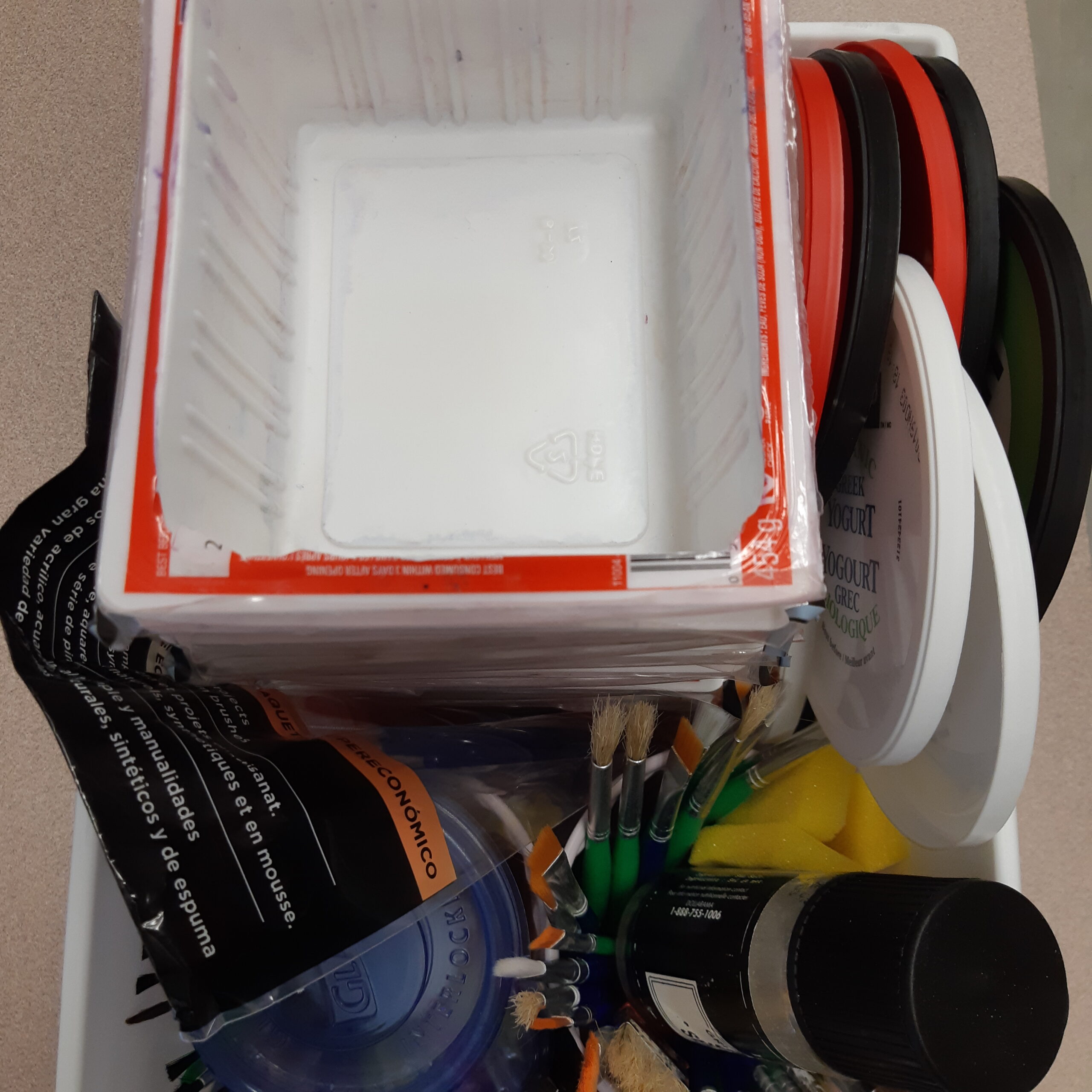
2) Save your old magazines and/or ask your friends and relatives to do it for you. They’re great for art, STEM, and language classes!
PREPARE:
One thing every teacher needs is an emergency substitute binder. Don’t worry so much about a schedule, because every day will be a little different. What you do need is a day’s worth of materials (or more!) across a variety of subjects. Make sure that all the copies are made. This ensures that your sub will always have something to give the kids in the morning, even if they get lost on the way and arrive late, even if the photocopier is broken, and even if the office doesn’t get the last-minute plan that you emailed them. Having this binder ready also ensures that you won’t have to worry if you get sick on a day when the lesson you had planned isn’t one you want to give to a substitute. Just tell them to pull materials from the binder for that block instead!

